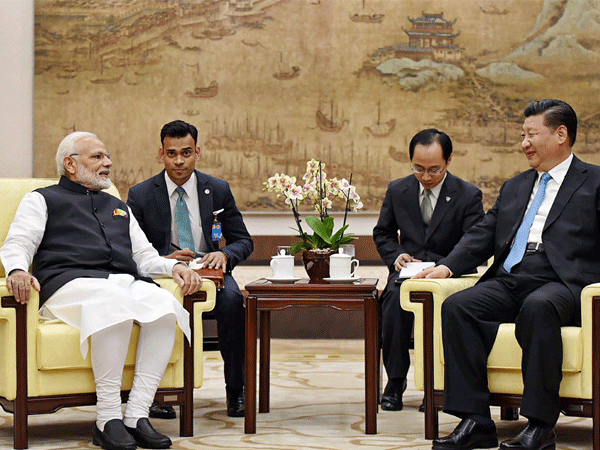
The India-China summit between Chinese President Xi Jinping and Prime Minister Narendra Modi brings an end to the strains that had developed in the bilateral relationship for the past couple of years. Both India and China took the steps to recalibrate their ties with a meeting at the highest political level. The meeting without a set agenda was to allow the two leaders a frank discussion on India-China relations as well as the fluid global situation and set a new course for the bilateral relationship. The initial moves for a leaders meeting were made in December when Chinese Foreign Minister Wang Yi met external affairs minister Sushma Swaraj at the time of the Russia-India-China trilateral meet in Delhi.
Bilateral relations have been under strain with missteps on both sides, and unusual steps were called for to restore the ties. These are unsettled times where the unpredictability of American policies is making friends and rivals realign their policies. Japan and China, which were at cross purposes just a few years ago, are now making friendly overtures with a planned meeting of prime minister Shinzo Abe with president Xi in Beijing. The fast paced developments in the Korean peninsula fuelled by US president Donald Trump’s tweets seem to edge Beijing out of its area of influence.
Relations between the US and Russia are at their lowest since the cold war, with Washington imposing fresh economic sanctions on Russian entities that could have an impact on India’s defence purchases. Trump has warned of a trade war with China over its huge trade surplus. Some of the trade tariffs imposed by Washington on Chinese goods are likely to hurt Indian exports as well. Despite the sharp words over the trade deficit, Washington has been keeping a friendly tone with Xi Jinping.
Pakistan has moved closer into the Chinese orbit and is in the process of building up ties with Russia. In these circumstances, it becomes necessary for New Delhi’s ties with the US, Russia and China to remain on an even keel. Modi is due to visit China in June to attend the 18th Shanghai Cooperation Organisation summit in Qingdao; therefore it was desirable to resolve outstanding issues between them, especially after the tense faceoff in Doklam last year. Both sides were careful not to raise expectations on the outcome of the “informal meeting”, merely looking for broad political direction for the official bilateral dialogue. At the time of announcing the summit meeting Wang had expressed the hope that it would “help deepen mutual trust between the two leaders, make strategic judgment on world matters and China-India relations, and guide the two countries to open up new prospects for bilateral ties.” Both leaders have opposed the increasing protectionism and the anti-globalisation mood that is rising globally.
An adversarial relationship does no good to either country. An acrimonious relationship was an anomaly for either side, especially when Xi has built up his stature to a supreme leader. Ever since the two sides rebuilt their ties in 1988, they have made efforts to keep their differences aside, especially on the disputed border and work on the positives in the relationship. In the past two years, bilateral relations had got bogged down on a few issues and a change in style of reacting publicly to irritants. New Delhi chaffed at Beijing blocking India’s membership to the Nuclear Suppliers Group and preventing Pakistan based Masood Azhar from being listed as a UN designated terrorist. Border intrusions further marred the relations leading to the confrontation at Doklam.
Beijing reacted sharply to the Modi government’s benign attitude towards Tibetan activity and the Dalai Lama’s visit to Tawang. Though the Doklam faceoff ended with both sides disengaging their troops, Beijing built up its forces along the Line of Actual Control (LAC) including at areas just off Doklam in the trijunction of India, China and Bhutan.
India kept out of China’s high profile Belt and Road Initiative (BRI) summit and its objections to the ambitious scheme have found echo in the unease voiced by some European nations. China is India’s largest trading partner, though the high trade surplus is a cause of concern for India. But India is looking for large Chinese investments and Chinese companies would like to make greater headway in the Indian market.
The Modi government made a sharp change in its approach towards China by making special efforts to create cordial conditions before the summit. It ensured that all the high-profile events planned to mark the 60th anniversary of the Dalai Lama’s arrival in India were moved out of the capital. Senior ministers and ruling party leaders were advised against attending the events during “the sensitive time” in India-China relations.
An informal summit may lead to rapprochement, but ties need to be taken forward with painstaking effort at various levels.





